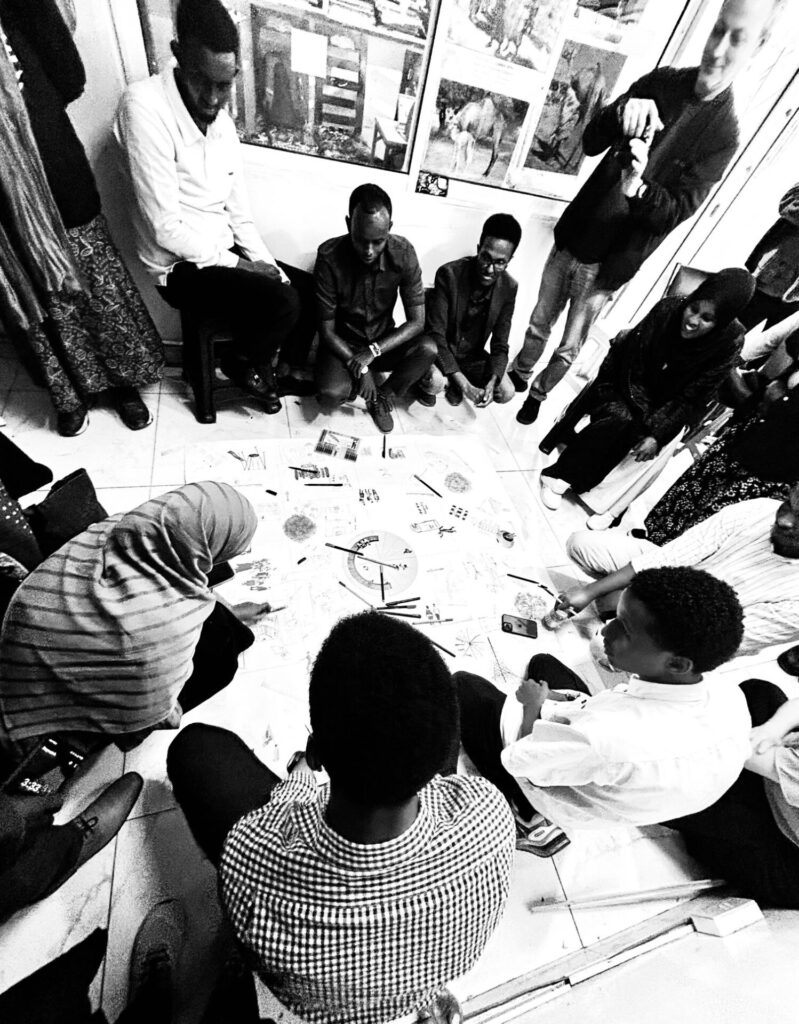photo Kadija George Mboka Festival
The Visual Assembly in Nairobi took place in two parts. First, it involved what in the West is called the cultural intelligentsia: representatives of various festivals from countries ranging from the UK to Sudan, and from China to Uganda, as well as students and refugees from Sudan.

photo Grant Galbraith
The Visual Assembly in Nairobi took place in two parts.
First, it brought together what’s often called the “cultural intelligentsia” in the West: representatives of various festivals—from the UK to Sudan, from China to Uganda—as well as students and refugees from Sudan.
After that, we went to a center for Somali refugees.
We continued working with the same “napkin”—a shared sketch of ideas we had started earlier. Concepts proposed by members of a Chinese NGO (like playgrounds powered by green energy) and by festival organizers (like growing spice gardens directly on the playgrounds) were picked up and developed further by participants in the Somali refugee community.
The core question was the same in both parts of the Assembly—and it carries on from our discussions in Saint Vincent:
How can we imagine public spaces that are created and cared for by the people who use them—children, parents, neighbors? Spaces where decisions about how they work and grow are made collectively by the community itself?
The playground where we held the discussion turned out to be the perfect setting. In much of the Global South, playgrounds like this are almost nonexistent. You usually only find them in commercial spaces—next to fancy hotels, private schools, resorts, or tourist-friendly parks.
As one of the Somali refugee center organizers said:
“We adults are too greedy! We take every square centimeter for business, for efficiency. And our children end up playing in the dirt, on the roads, in random corners.”
Of course, it’s not that Somali refugees are somehow greedy or that Westerners are particularly generous. It’s just that when communities go through extreme hardship—like many refugee groups or countries across the Global South—the first thing that tends to collapse is the capacity to protect cultural identity and the spaces where children can grow, play, and develop outside of survival mode.
It’s hard. But it’s something we have to find a way to do.
